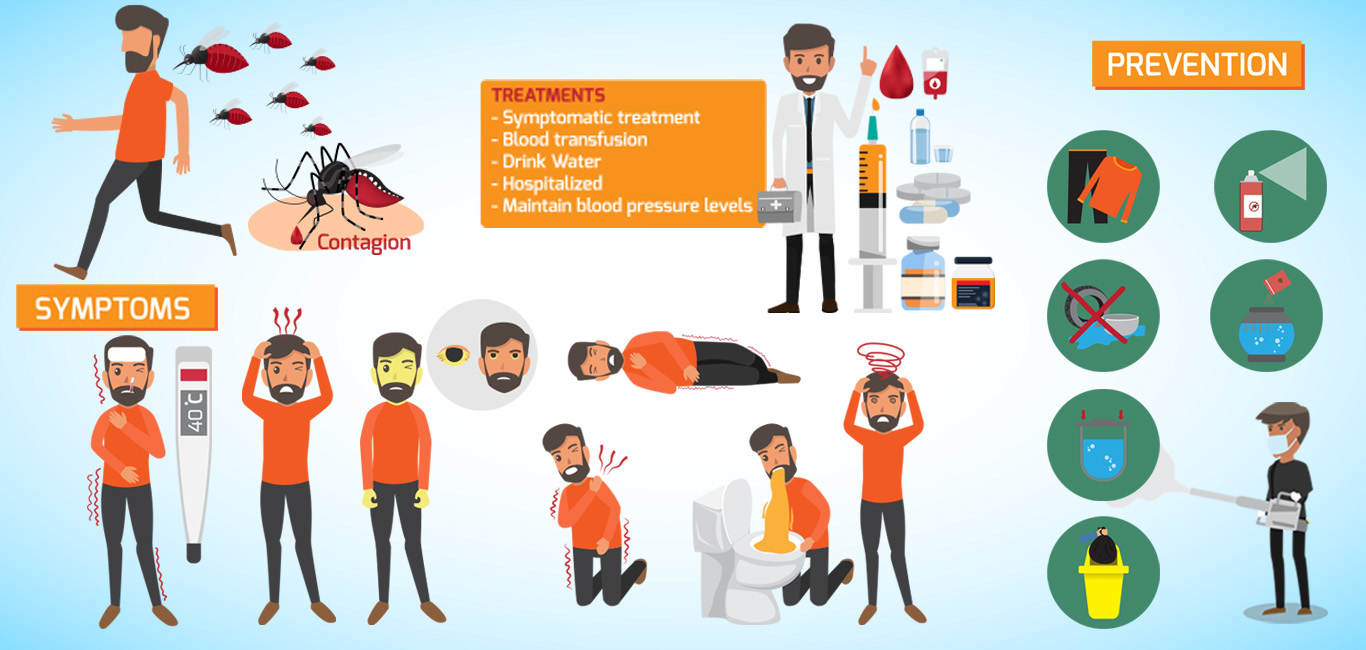
The yellow fever virus is typically found in tropical and subtropical belts of Africa and South America, Central America, and some Caribbean islands. It is transmitted by infected mosquitoes and causes acute bleeding.
Yellow fever epidemics occur when infected humans enter heavily populated areas where mosquitoes, especially the Aedes aegypti species, are present.
In its severe form, the virus attacks and destroys liver cells. This causes jaundice, with yellowing of the skin and eyes due to deposition of the bile pigment.
Symptoms
The first symptoms usually appear after an incubation period of three to six days. Some of the mild symptoms are –
- Sudden onset of fever, and a severe headache
- Sickness, chills, and loss of appetite
- Pain in the back and muscles
- Nausea, vomiting, and weakness
- Sensitivity to light
Most people with mild symptoms recover within a week, although they still feel weak and tired for several months.
About a quarter of the infected people will feel better for a few hours but may suddenly develop more serious symptoms like –
- Jaundice, where there is yellowing of eyes and skin, and dark coloured urine
- Bleeding from nose, mouth, or eyes
- Presence of blood streaks in vomit, or in faeces
- Shock and organ failure (liver and the kidneys)
About half of the people who experience these serious symptoms may die within a week.
Causes
The yellow fever virus is an RNA virus and is transmitted by the Aedes and Haemagogus species of mosquitoes. Wild mosquitoes breeding in tropical rainforests get infected when they bite monkeys, which are the primary reservoirs of the virus. When these infected mosquitoes bite humans, it is then passed onto the entire local population.
The virus has three transmission cycles –
- Jungle – In this cycle, wild mosquitoes (Haemagogus) primarily transmit the virus from the host, usually an infected monkey to other monkeys, or to humans, if they visit these jungles
- Intermediate – In this cycle, the virus is transmitted from an infected monkey to humans or from an infected human to other humans by the bite of semi-domestic mosquitoes
- Urban – A human who is infected in either of the two earlier cycles is now infectious to mosquitoes in the urban setting, primarily the Aedes aegypti variety. Once the mosquito has bitten this human, it gets infected. The virus is then easily transmitted to other humans.
Diagnosis
During the initial phase, yellow fever is often mistaken for malaria, dengue, or other viral infections
- Travel history and symptoms of the infected person can help in diagnosing the condition
- Polymerase chain reaction (PCR) tests can detect the virus in blood and urine in the early stages
- Antibody testing is needed to confirm the infection in later stages
Treatment
- Early supportive treatment is necessary to improve survival rates
- Once it starts, there is no medicine to manage yellow fever, however, plenty of rest, and fluids, along with simple painkillers as directed by the physician are useful to reduce fever and relieve pain
- Avoid dehydration to correct the electrolyte imbalance due to vomiting and kidney failure
- Use of antibiotics advised by the doctor for any associated bacterial infection
Prevention
- Getting a safe, single dose of vaccine provides life-long immunity against the condition
- Eliminating mosquito breeding sites in urban areas
- Covering the body with pre-treated clothes and using approved insect repellents when visiting endemic areas
- Installing screens on all windows and doors to keep mosquitoes away
Sources:

















